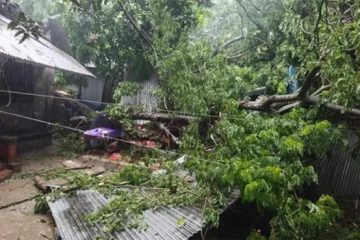Poor doubly deceived by WASA
 Most of the people in both rural and urban areas still have little or no access to safe drinking water as the policymakers, industries and research workers are yet to come up with a comprehensive and pragmatic plan to address the problem, reports NewAgebd.
Most of the people in both rural and urban areas still have little or no access to safe drinking water as the policymakers, industries and research workers are yet to come up with a comprehensive and pragmatic plan to address the problem, reports NewAgebd.
Even most of the ‘improved’ sources installed by the Water Supply and Sewerage Authority (WASA) provide dirty and stinky water laced with pollutants to consumers.
Poor people, especially the slum dwellers in urban areas, are doubly deceived as they pay more than the well-off sections for water.
‘We buy a bucketful of WASA water [ some 20 litres] for one taka at our slum, while my master, who lives in Mirpur, pays 6 taka only for 1,000 litres,’ Arzina Begum, a domestic help, who lives at a slum in Senpara area of the city, told New Age.
‘We are forced to drink and do household work with stinky and muddy water which at times carries dead insects,’ said Arzina.
‘My children often fall sick and I think dirty water is a reason,’ she said.
Dr Dibalok Singh, executive director of Dustha Shasthya Kendra, an NGO working on water issues, said the society’s bias against the poor was reflected even in access to safe water inequality in the distribution of water.
‘Poor people suffer far more than the richer section as they live either out of the official water supply network or on the fringe where pressure of water in the supply line is very low, and the WASA hardly cares about their problems,’ he said. ‘It is an injustice to them and this is a pattern that is seen everywhere in the urban areas.’
Singh, a physician, said, ‘The poor people, who can hardly afford healthcare facilities, are paying more in procuring water but do not have facilities to boil the water they drink. As a result they get sick easily and the costs of treatment make them financially vulnerable.’
More than 30 million people still do not have access to ‘safe’ drinking water in Bangladesh, according to Global Annual Assessment of Sanitation and Drinking Water 2010 report published by World Health Organisation in February.
About 20 per cent of the 160 million people still get water from ‘unimproved’ (unsafe in other word) sources and 80 per cent receive water from ‘improved’ sources, it said.
Experts and rights groups, however, have expressed serious doubt about the quality of the water supplied by ‘improved’ sources including WASA.
Professor Mujibur Rahman of Bangladesh University of Engineering and Technology observed that the quality of drinking water was deteriorating day by day. ‘Bad smell and presence of insects in piped water has become a concern for citizens. It is hardly seen in a civilised society.’
‘There are no effective measures to ensure safe water in and around Dhaka city. We have kept our activities confined to discussing the problems in seminars and ritualistic observance of the days [like World Water Day],’ he said.
Stressing the need for stopping river water pollution around the city, and in other areas as well, he said, ‘We cannot expect an improvement unless we stop discharging waste in water bodies.’
Bangladesh Centre of Advance Studies executive director A Atiq Rahman said crisis of safe water due to pollution by industrial waste, pesticides, arsenic and salinity not only posed a threat to public health, but was also affecting agriculture, quality of food and health services.
The High Court on March 15 asked the government to send samples of drinking water supplied by Dhaka Water and Sewerage Authority to three authorities, including World Health Organisation, and collect test reports on the quality of water supplied by the state-own utility agency.
Dhaka WASA deputy managing director Liakat Ali told OOSkanews that it was supplying 1,930 million litres of water on an average everyday for 90 per cent of the 12 million residents of the city. ‘We are trying to maintain quality of the water we supply,’ he claimed.
Atiq Rahman and Mujibur Rahman said a research-based policy decision was essential for resolving the crisis of safe water.
Singh suggested installation of separate supply lines for drinking and non-drinking water to tackle the problem.




















